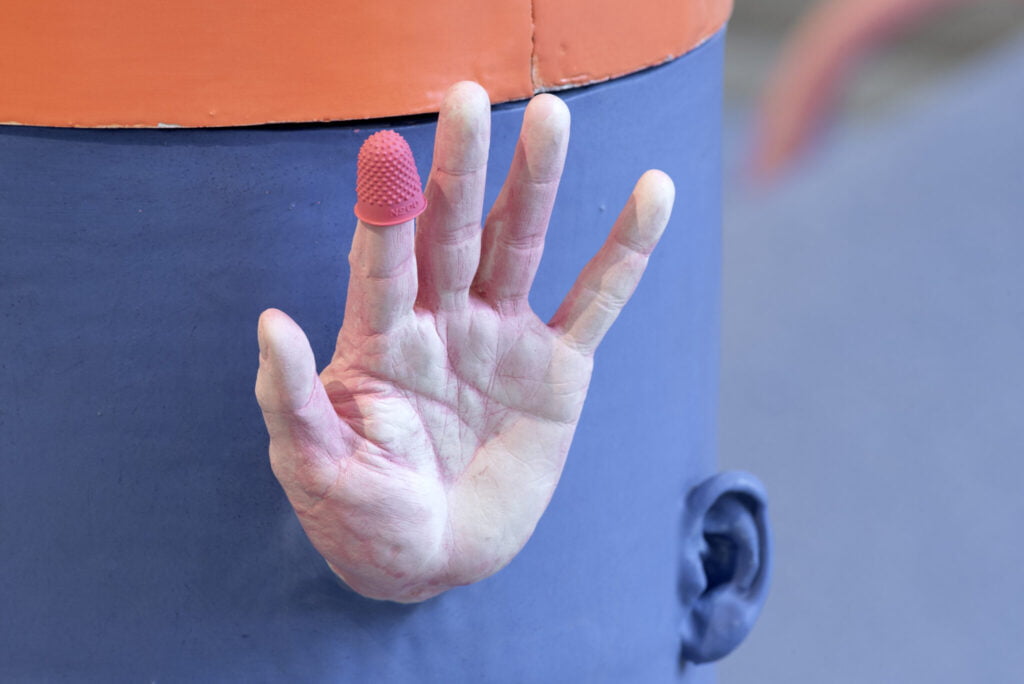
Jonathan Baldock, ‘Facecrime’, Bluecoat installation view, 2020
Let’s dive right in: Jonathan Baldock is one of those artists who effortlessly manages to marry ideas with a proficiency in his chosen medium that allows him to communicate both clearly and beautifully. His current show ‘Facecrime’ at Liverpool’s Bluecoat Gallery was my first chance to see his work in its clay flesh. I initially encountered the artist at a talk he gave in the same gallery a few years ago – I was completely enamoured with the way he talked about his work: it was accessible, witty, and most importantly, funny.
Remembering that talk as one of the few that left me feeling inspired rather than sleepy, I was really looking forward to experiencing his work first hand. I hadn’t seen any exhibitions for months (not counting virtual gallery tours and shows in the artists’ homes via Instagram) so my art-starved brain was like a sponge, ready to soak up any and all visual, not-screen-based stimuli.
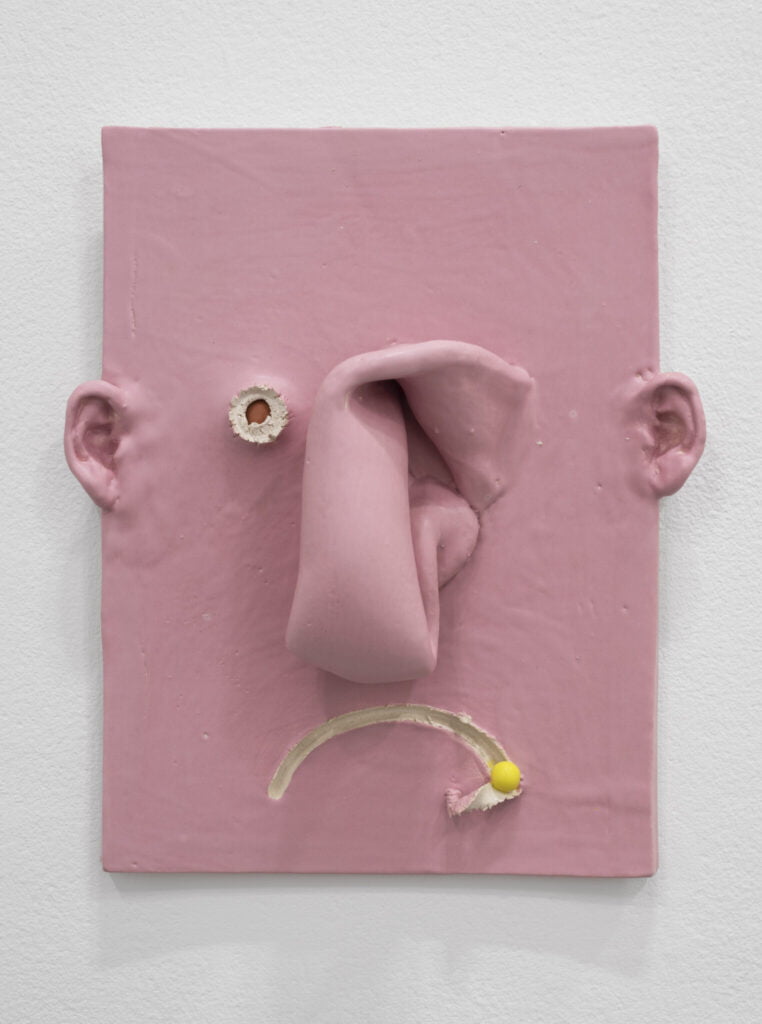
Jonathan Baldock, ‘Facecrime’, Bluecoat installation view, 2020
The show takes its name from George Orwell’s ‘1984’ vocabulary: ‘facecrime’ is a facial expression which reveals one’s true emotions, forbidden under the dystopian regime of Ingsoc. Filled predominantly with clay faces and 3D emojis, Baldock invites us to think about communication, language and its expression – its future and evolution.
In the smaller Gallery One, I found myself surrounded by clay tablets moulded into faces, or rather expressions of different colours, all the same size. Reminiscent of Caroline Caroline Achaintre’s ‘masks’, these pieces are arranged in a straight line, allowing me to compare the grimaces and pouts, and notice any continuous motifs. Beads, slits, drips, gold leaf, folds and casts – it’s here that Baldock’s mastery of the ceramic medium allows him to show off his ability yet remain playful, experimental and open to the wonders of the material and its properties.
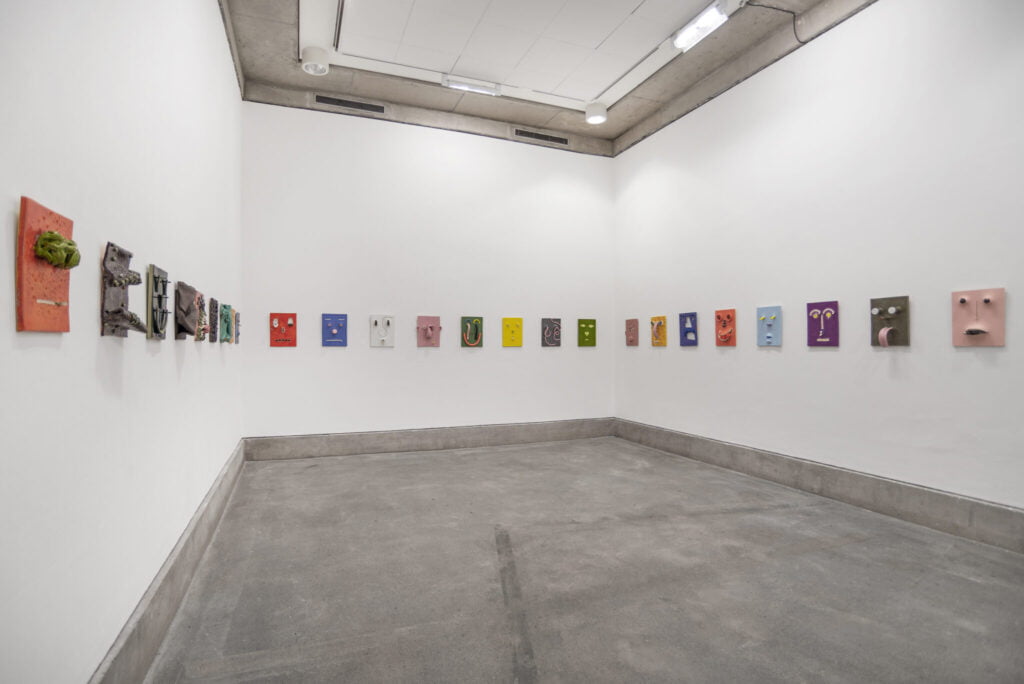
Jonathan Baldock, ‘Facecrime’, Bluecoat installation view, 2020
The consistent format of the pieces makes this part of the show all the more impressive: each face is the same size yet they’re all so different. Winking, yawning, screaming, grinning – we are free to imagine and project emotions onto these characters with beady eyes and tangled noses, just as they’re free to be happy, rude, cheeky or disgusted. Facecrime in full swing! At a time when seeing other people’s faces usually means only glimpsing their eyes and guessing what their mouth is doing under a protective mask, these pieces are an accidental reminder of a freer time. Although of course, we’re not prohibited from showing emotion, the inability to show our faces makes us more prone to assumptions and guesses about what we’re really thinking. (Please do wear your masks – this is merely a thought about art unwittingly reflecting our current situation, NOT an invitation to abandon efforts to keep each other safe.)
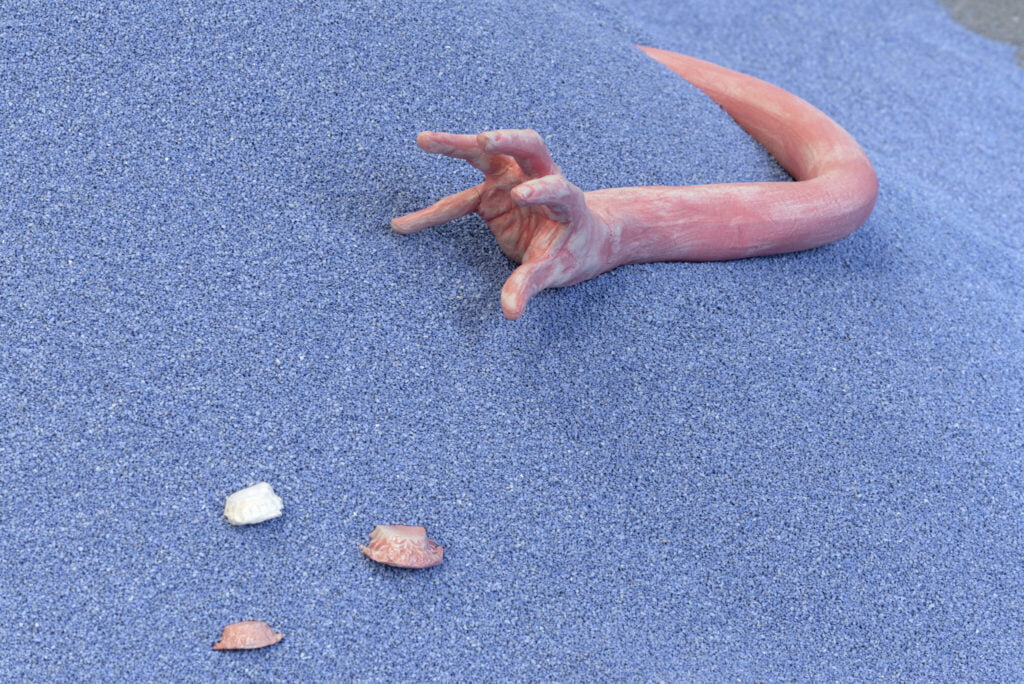
Jonathan Baldock, ‘Facecrime’, Bluecoat installation view, 2020
The larger Gallery Two houses high stacked ceramic columns and clay emojis scattered across the floor in blue sand. The space brings to mind the site of an archaeological dig, revealing the metaphorical world of our increasingly visual language, with smileys, crying faces and happy poos made into physical objects. The emoji symbols are incorporated into the larger columns, stacked high and surrounded by noises of sighing, whistling and laughter. Pink limbs reaching out of blue grainy piles resemble photos from sightings of the Loch Ness monster; mouths and teeth marks decorate the edges of the vessels; and blown glass drips flow through ceramic ‘taps’.
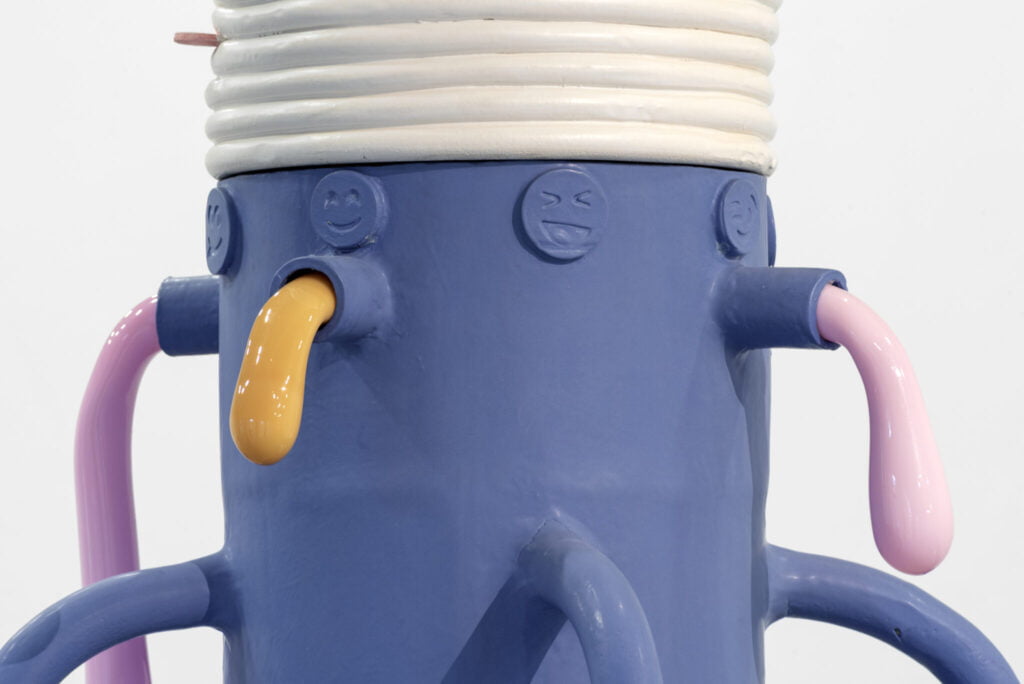
Jonathan Baldock, ‘Facecrime’, Bluecoat installation view, 2020
The atmosphere of a discovery site and the fragility of ceramics encourages you to move around the objects slowly and deliberately. Somehow, the show seems like the perfect physical embodiment of the internet: the pleasing aesthetic provides instant gratification that can still be absorbed by looking at it through your phone, yet for those willing to spend more time looking, there awaits a multitude of tiny gifts in the form of humorous details and skilful touches. You can take as much, or as little, as you want from it.
The repetition of familiar symbols reminds me of the little box of most-used emojis in a WhatsApp chat. Complex emotional reactions pared down to a single tiny image, packaged and flattened. Then again, isn’t this what we do with all history? Simplify and parcel it up into manageable chunks and terms for the new generations?
With craft processes becoming more and more popular in fine art settings, ‘Facecrime’ satisfies the need for being in awe of both the execution and ideas of the works in the show. It will make you want to send an emoji-filled message, exclaiming how much you enjoyed it, to all of your friends as soon as you walk out of the gallery.
‘Facecrime’ by Jonathan Baldock is on display at the Bluecoat Art Gallery until the 1st of November. It’s free but you can book an appointment here.
Filed under: Art & Photography
Tagged with: 1984, art, artist, Bluecoat, ceramicist, ceramics, clay, communication, contemporary, Craft, exhibition, expression, facecrime, George Orwell, Jonathan Baldock, language, material
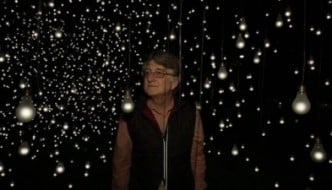
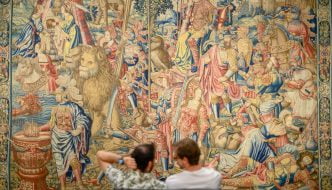
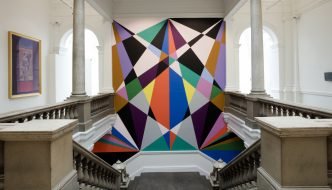
Comments